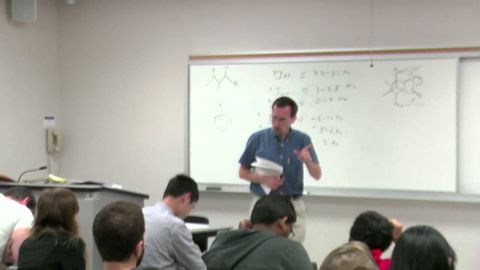
Subtitles & vocabulary
Chem 203. Organic Spectroscopy. Lecture 15. Coupling Involving Other Nuclei
00
Cheng-Hong Liu posted on 2015/01/31Save
Video vocabulary
comment
US /ˈkɑmɛnt/
・
UK /'kɒment/
- Noun (Countable/Uncountable)
- Something you say, giving an opinion; remark
- An explanatory note in a computer program.
- Verb (Transitive/Intransitive)
- To say something that gives your opinion
- To add explanatory notes to a computer program.
A2
More couple
US /ˈkʌpəl/
・
UK /'kʌpl/
- Transitive Verb
- To join something to something else
- (Two animals) to engage in sexual relations
- Noun (Countable/Uncountable)
- Two people in a romantic relationship
- Two of something; two people; a pair
A2
More question
US /ˈkwɛstʃən/
・
UK /'kwestʃən/
- Transitive Verb
- To ask for or try to get information
- To have or express concerns or uncertainty
- Noun (Countable/Uncountable)
- Issue or problems you are dealing with
- A sentence worded or expressed so as to elicit information.
A1
More board
US /bɔrd, bord/
・
UK /bɔ:d/
- Noun (Countable/Uncountable)
- Surface for posting or showing information
- Group of persons who direct an organization
- Verb (Transitive/Intransitive)
- To enter a ship, plane, or other vehicle
- To pay money to live in someone's house; lodge
A1TOEIC
More Use Energy
Unlock All Vocabulary
Unlock pronunciation, explanations, and filters
